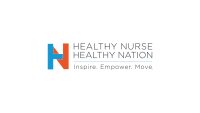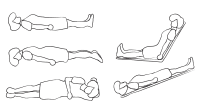Put people first to achieve positive outcomes.
The success of any organization requires the engagement and well-being of its frontline workers. In healthcare, nurses play an indispensable role in achieving superior clinical outcomes and overall organizational success.
The power of putting people first
To yield tangible results, healthcare organizations must intentionally put people first. When organizations genuinely prioritize the well-being of nurses, make them feel valued, and give them a voice, they cultivate a culture of trust, respect, and collaboration. This culture, in turn, enhances job satisfaction, reduces turnover rates, and improves patient care quality.
Most organizations focus on results, frequently overlooking the crucial role employees play. By prioritizing metrics over the well-being and engagement of their workforce, organizations miss the opportunity to harness the full potential of frontline staff. When nurses feel supported and appreciated, they become more engaged and committed to their work. Most importantly, when organizations focus on people, employees identify a professional home and tend to stay, further strengthening the organization’s stability.
Bridging the gap between intent and impact
Although many healthcare organizations recognize the importance of supporting direct care nurses, a gap frequently exists between good intentions and nurses’ perceived impact. This gap can stem from a lack of meaningful engagement at the onset. Consider well-being initiatives. Organizations must involve nurses in the decision-making process, including the selection and implementation of those initiatives.
Engaging nurses in this way ensures that their voices and unique perspectives are heard and considered. Nurse involvement also helps identify and address potential barriers to success. A well-being program designed without nurse input may overlook critical factors, such as shift schedules or workload demands, leading to low participation and minimal impact.
Strategies for effective engagement
- Embrace shared decision-making and invite regular feedback: Create opportunities for nurses to provide feedback on processes and initiatives that impact their practice and well-being. Regular feedback ensures that initiatives remain relevant and responsive to nurses’ evolving needs. Even great initiatives can be made more effective with simple changes identified by the team.
- Foster open communication: Create a culture of open communication and embrace negative feedback. Leader response to feedback, comments, or concerns will determine the likelihood of future engagement. Sharing concerns and suggestions without fear of retribution builds trust and gives nurses a sense that leaders see them as valued partners.
- Equip nurse managers: Ensure nurse leaders have the skills and resources to support and advocate for their teams. Assess their leadership competencies, educate them about the essential elements of creating a supportive work environment (such as human-centered leadership, psychological and physical safety, effective communication, and shared decision-making), and provide them with the tools to measure initiative impact.
Make the investment
When we prioritize our people, we invest in the foundation of our healthcare system. Nurse engagement and well-being isn’t merely a metric of success; it’s the cornerstone upon which we build a healthier, more resilient future for all.
Christine Pabico, an American Nurse Journal editorial board member, is senior director of the Pathway to Excellence Program at the American Nurses Credentialing Center in Silver Spring, Maryland.
American Nurse Journal. 2024; 19(10). Doi: 10.51256/ANJ102464



















4 Comments. Leave new
Printed out and sharing at work, especially with unit manager and unit director. Excellent explanation of frontline employee needs.
Thank you for sharing. Together all of us can create environments that put our people first. When they feel valued, they go above and beyond for us.
This is such a wonderful reminder for all of us!!
Thank you. Please share with your network.